This post may contain affiliate links. Please read our disclosure policy.
A Simple DIY for how to make almond meal PLUS almond meal vs. almond flour (and almond pulp), including recipe and usage suggestions!
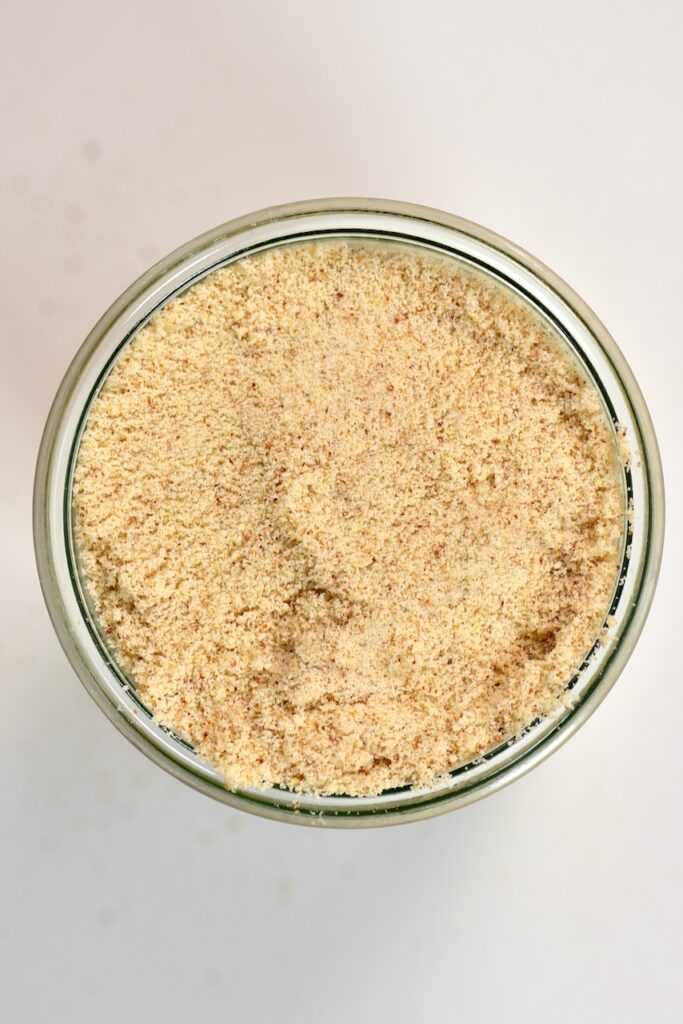
Whether you follow particular dietary requirements and need an ‘alternative’ ingredient, or you just love almonds – this post contains a quick and simple DIY on how to make almond meal in just a few minutes. As well as a list of possible uses for the ingredient.
Want to save this recipe?
What Is Almond Meal?
Almond meal is essentially ground up raw almonds into a relatively fine powder. The resulting ‘meal’ can then be used in a variety of recipes and is Keto, Whole30, Gluten-free, and Paleo-friendly. It is also a low-carb option and has a variety of health benefits associated with it.
Almonds are not only high in protein, but they are also packed with healthy vitamins, minerals, and phytonutrients. These work to lower blood sugar and cholesterol levels, reduce hunger pangs, to keep you full for longer. Plus, almonds even contain antioxidants – protecting the body against harmful free radicals.

It’s not technically the same as almond flour (as you’ll see in the next section) and can be called various things in-store like ‘ground almonds,’ ‘almond meal’ etc. However, there is a long list of ways that you can use almond meal in your diet.
Super nutritious containing lots of healthy fats, antioxidants, fiber, protein (6g per 1/4 cup serving), vitamin E, and magnesium. These work to lower blood sugar and cholesterol levels. As well as reducing hunger – to keep you full for longer.
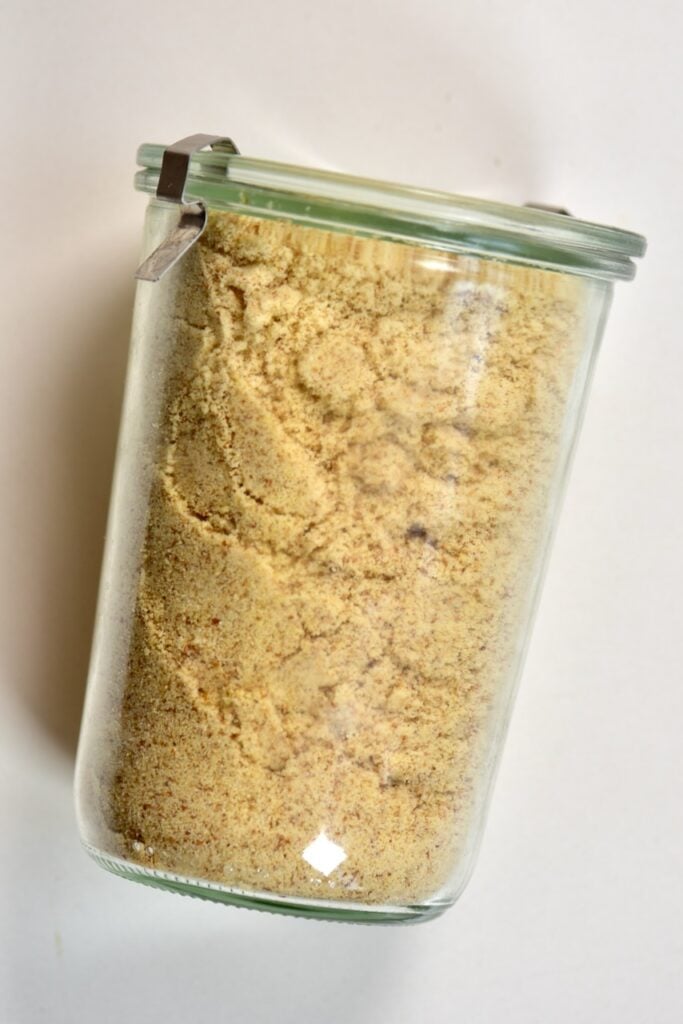
Almond Meal Vs. Almond Flour (and Almond Pulp)
While it may seem like almond meal and almond flour are interchangeable, they are different ingredients. Whereas almond meal is made using plain untouched raw almonds, almond flour is made using blanched almonds (peeled). As a third option, you also have almond pulp – the leftover almond pulp after making homemade almond milk.
Including the skins affects the color and texture of the ingredient. For example, almond meal is darker and ‘chunkier’ than almond flour. Meanwhile, the almond pulp is similar to almond meal; however, it needs to be dried out before use.
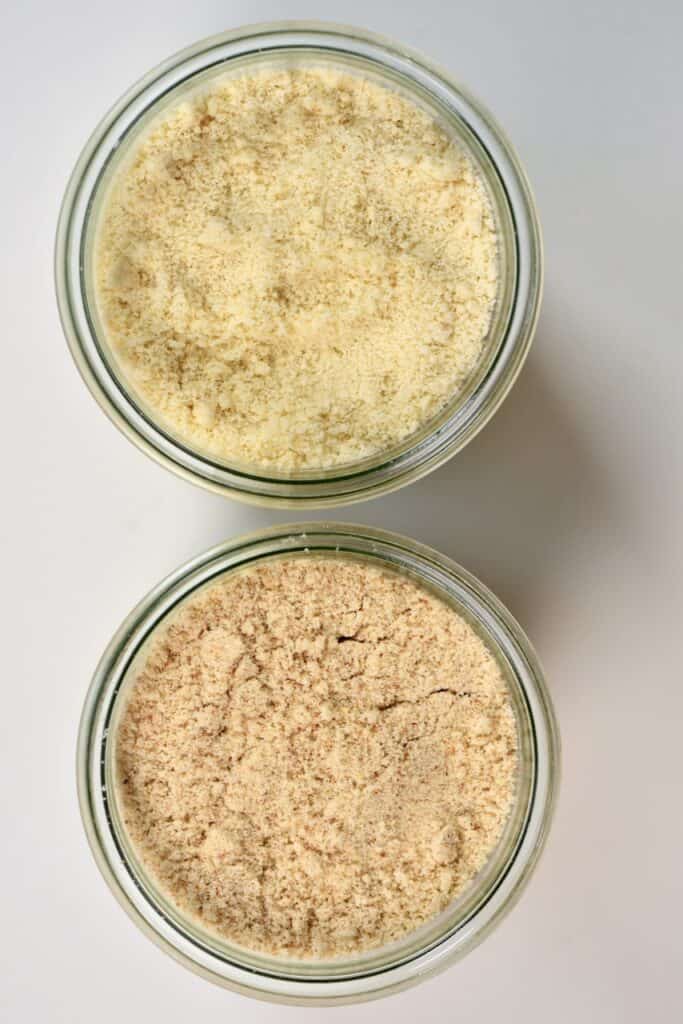
Technically, all three of these ingredients can be used interchangeably in many circumstances. The noticeable difference is that the blanched almond flour will be less ‘grainy’ and more ‘refined’ – much like other flour varieties. Most recipes will be clear if they want you to use a specific product – especially as blanched almond flour is the most all-purpose flour-like in texture – so best for specific baked goods.
How To Make Almond Meal
The process of making the almond meal is almost so easy that it’s not even worthy of a blog post. But the fact is, with it being such a versatile ingredient, I had to include this handy DIY here. Not only is making homemade almond meal practically effortless, but it also requires only ONE ingredient, a blender or food processor, and a few minutes of your time!
It is available to buy in stores, so some may wonder why bother to do it at home. Well, the truth of the matter is that it is often more cost-effective than store-bought options. Plus, it can taste better too – since it’s freshly ground. You don’t really know how long the almond meal in stores has been out for.
There are really only two steps to making almond meal:
First, pour your chosen amount of almonds into a blender or food processor (I also mention the coffee grinder method in the Notes section).
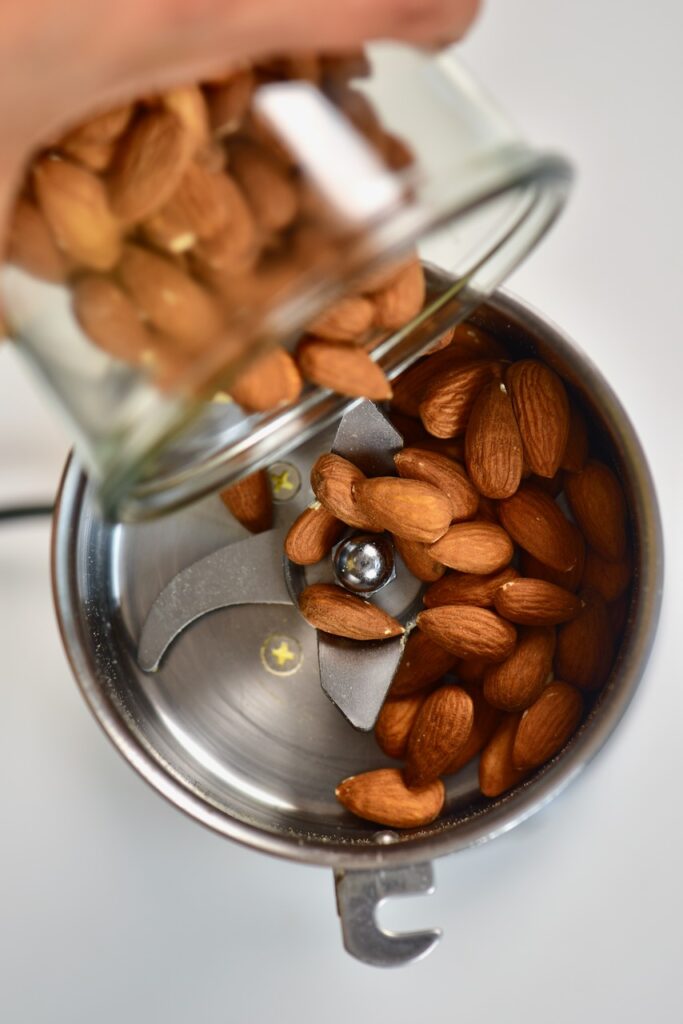
Then, blend until you receive a fairly fine powder (like fine bread crumbs).
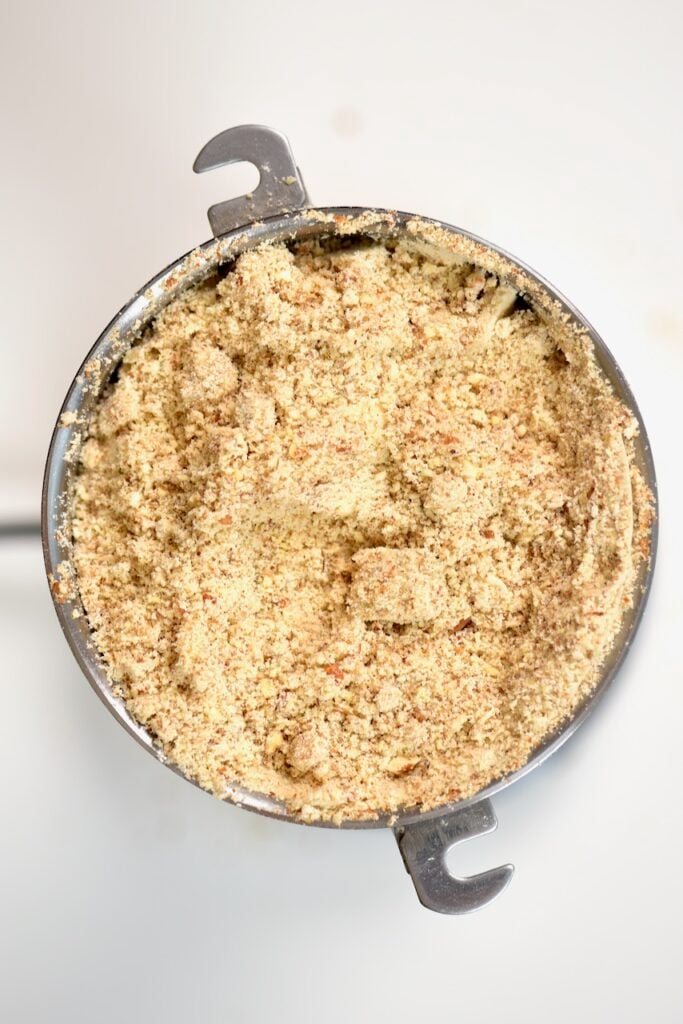
Depending on the machine you use or how fine you want to blend the almonds, you can sieve the powder to collect the larger bits.
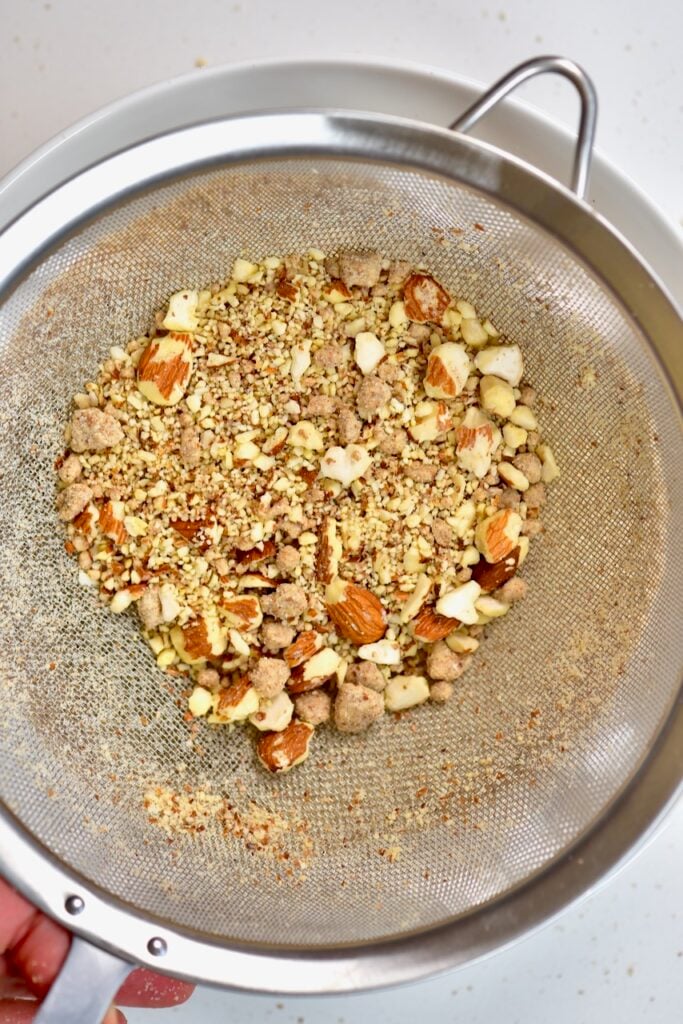
You can then grind them again to achieve a smoother texture.
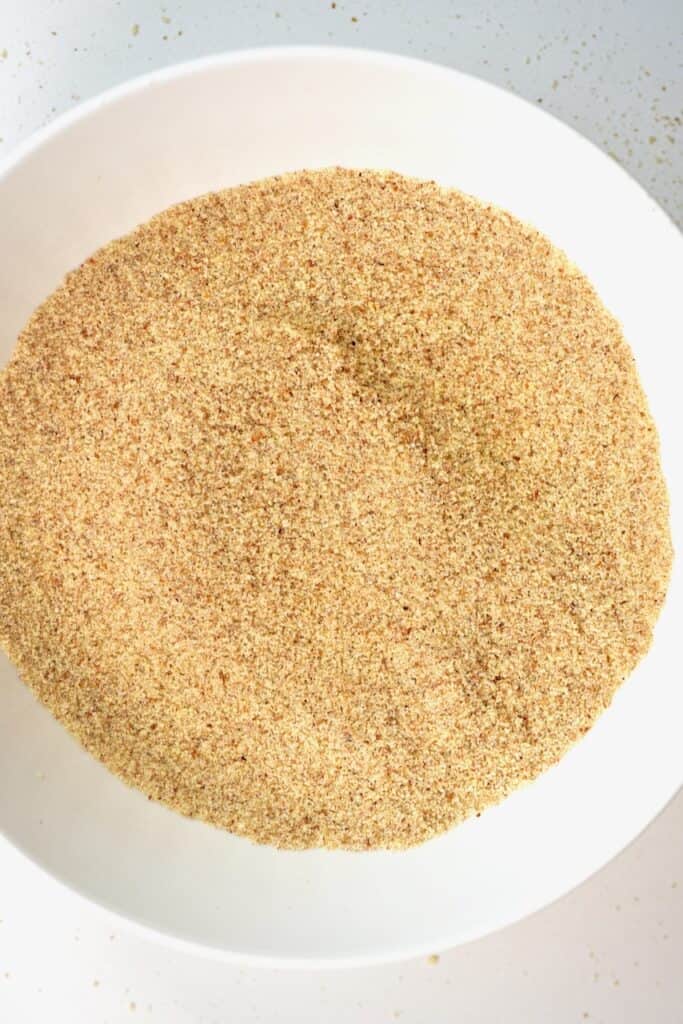
However, there is a little bit more to it than just grinding the almonds. So read my How-To card below for the full instructions and tips. Otherwise, you may run the risk of ending up with almond butter (which, while delicious, definitely isn’t what we’re going for here).
Almond Meal Recipes And Uses
There are a variety of ways that the meal can be used. For example:
- Using almond meal makes for a wonderful flour-free crumble topping.
- Almond meal can also be used as a breadcrumb substitute – both to coat items as well as to act as a binding agent. i.e., within meatballs, like this Mushroom & Lentil meatballs recipe.
- Pie & Tart crusts – both baked into as a gluten-free option, as well as for my vegan tarts. For example, this Vegan Earl Grey Blueberry Tart or this Vegan Pumpkin Pie Recipe.
- Cookies & Balls – whether using it in place of other flours or making almond-meal specific bites, i.e., these Almond Pistachio Thumbprint Cookies Recipe, Golden Turmeric Energy Balls (No-bake), or these Healthy Cacao & Almond Protein Balls.
- Candy Bars – Almond meal also works well for a variety of ‘healthier’ candy bar alternatives. I.e., these Healthier Homemade snickers Bars (Vegan) and Healthy Vegan Twix Bars.
- Cakes – A wonderful gluten-free alternative. For example, in this Simple Gluten-Free Banana Bread Recipe.
- You can use almond meal to make marzipan or almond paste (like this Egg-Free Almond Paste recipe).
- Other – There are a variety of other sweet and savory recipes that you could use this meal in. For example, pancakes, crackers, this Gluten-free Muhammara Dip (Roasted Red Pepper Dip), hummus, vegan cheese. It is also a good high-fiber addition to a smoothie.
If you have any questions, leave a comment below. Also, I love seeing your recreations, so feel free to tag me on Instagram @AlphaFoodie.
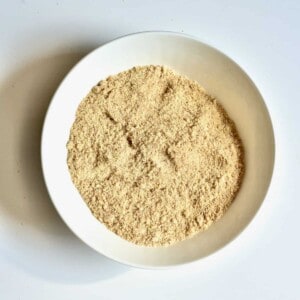
How to Make Almond Meal
Equipment
Ingredients
- 1.5 cup almonds
Instructions
- Place the almonds into a blender/food processor or seed grinder. * Depending on if you want to make just enough for a particular recipe or a large batch, it's good to note that it's usually around a 1.5:1 yield of almonds to almond meal. i.e., 1.5 cups of raw almonds will give you around 1 cup of almond meal.
- Pulse the almonds for 10-15 seconds at a time. In between pulses, shake up the blender to make sure the nuts are close to the blade again and not clumping up in the jug, then pulse once more. ** The almond meal is ready when it has a fine bread-crumb like consistency.
- Sieve the powder to collect larger bits and then grind them again.
- Transfer into an air-tight jar/container. You can store this in the fridge for 1 month or the freezer for 3 months.
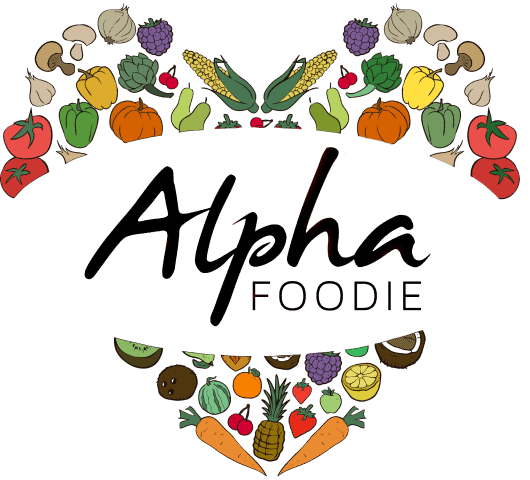
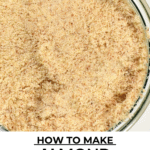
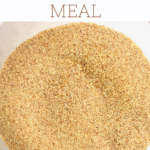
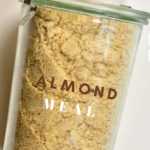
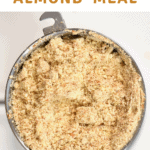
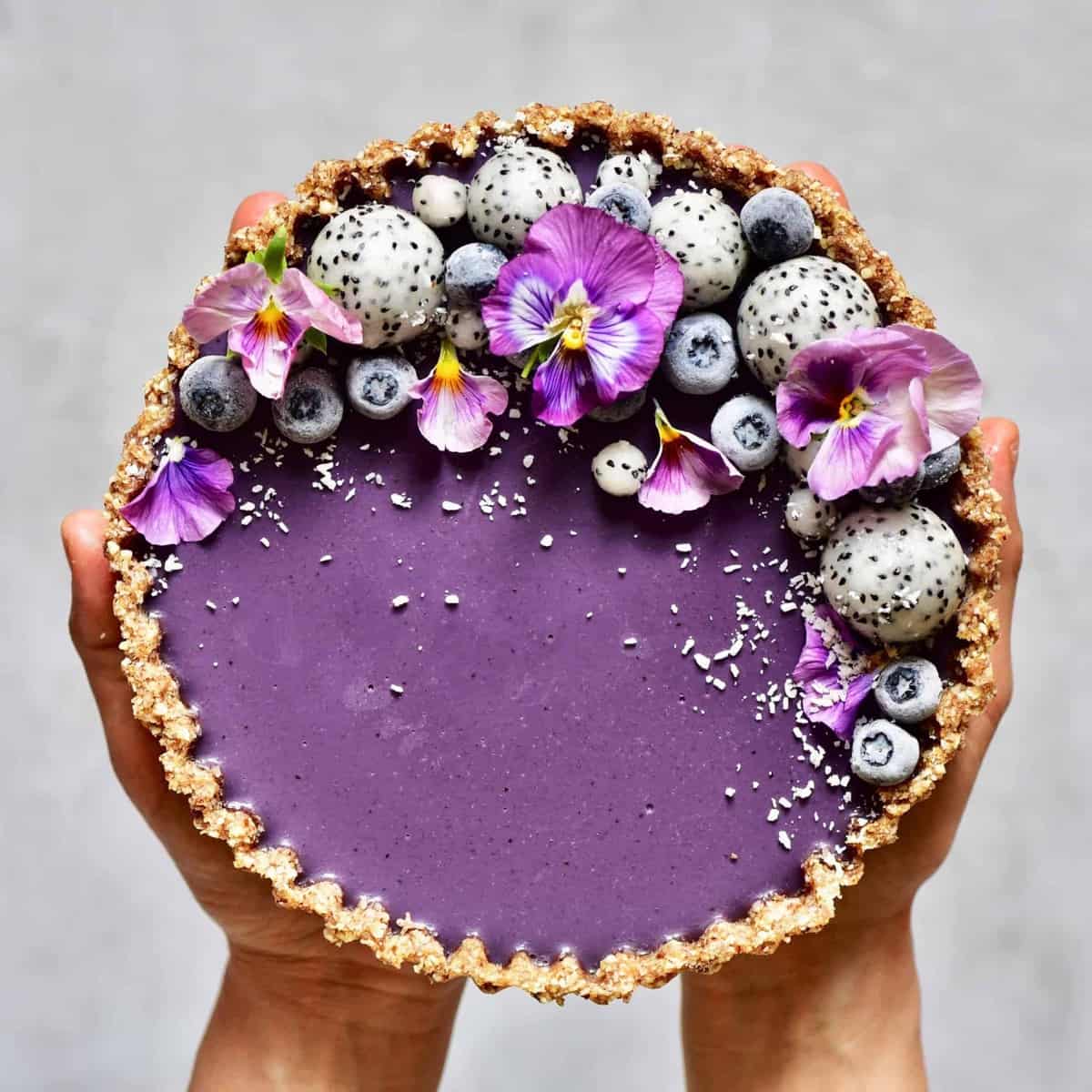
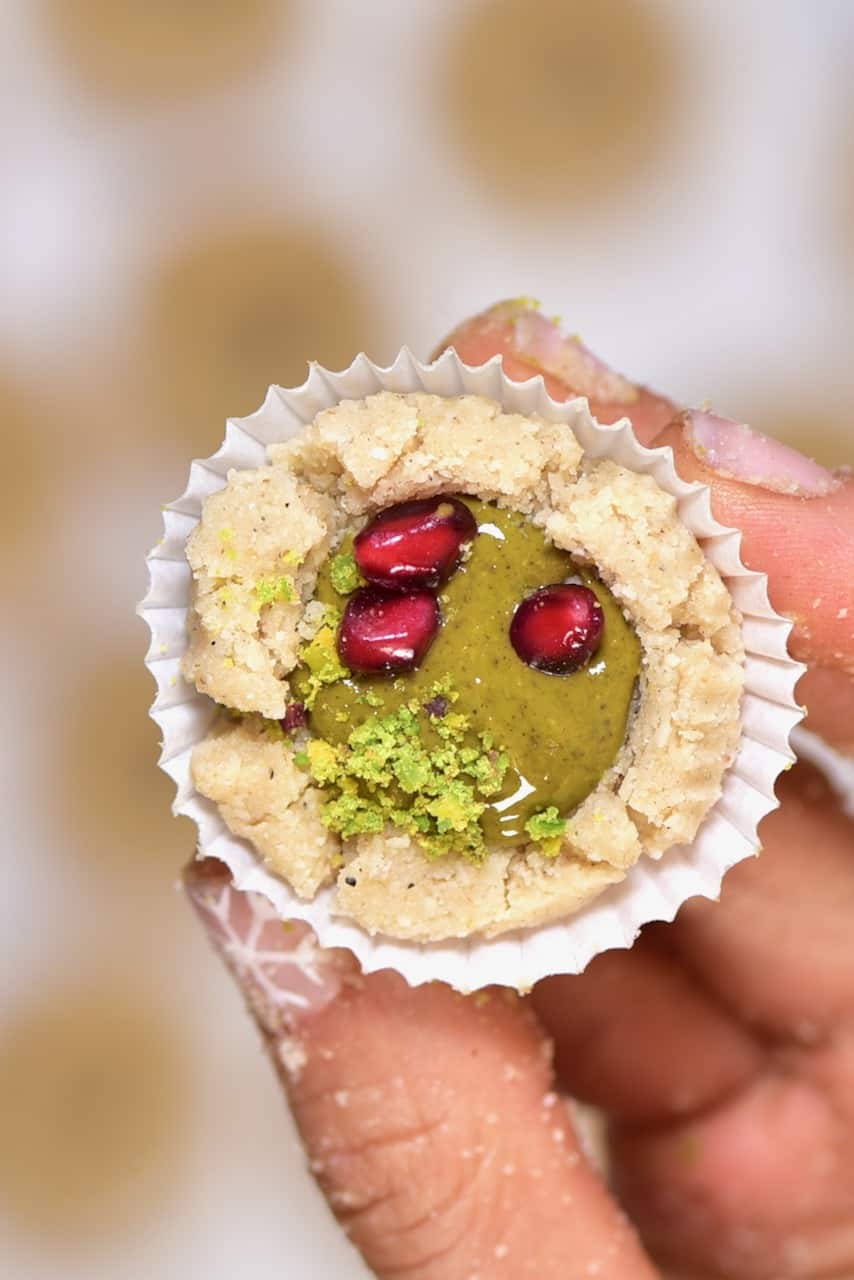
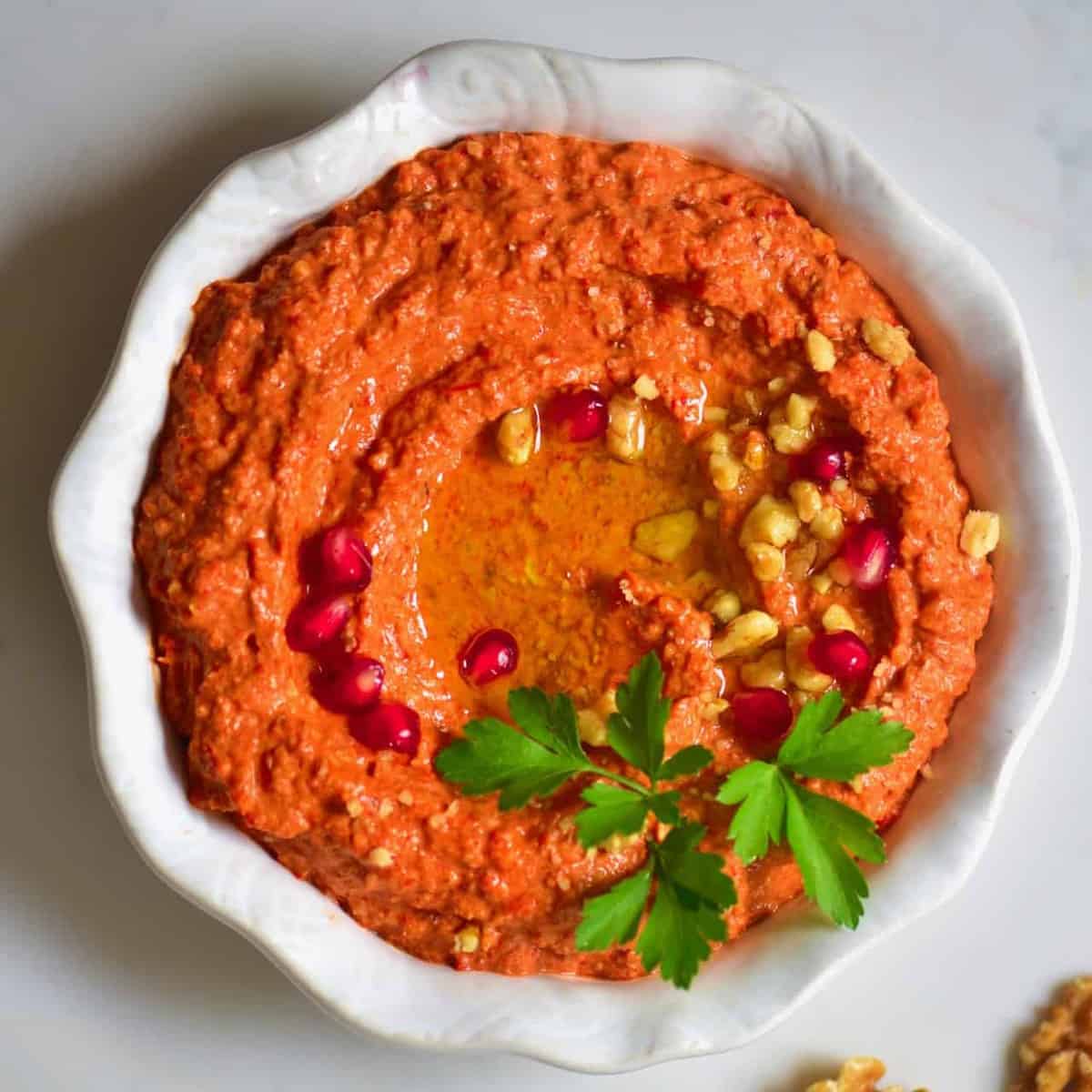

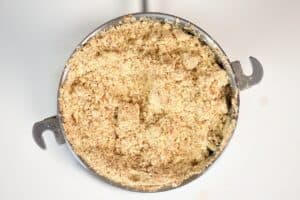
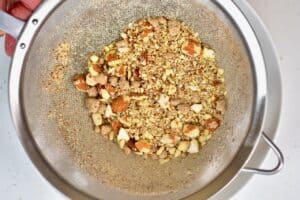
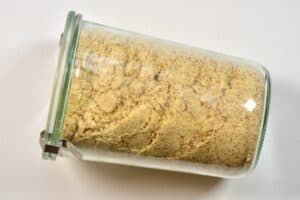









Can you use almond meal to make smoothes.
Hi Joan,
You can definitely use it in smoothies 🙂
Can I use flake almonds instead
Hi Pamela,
Yes, you could use flaked almonds but you would have almond flour – it will be finer/less grainy since flaked almonds are usually peeled. When using non-peeled almonds, the skins affect the color and texture so the almond meal is “chunkier”. Also, make sure to use raw almonds. In most recipes, almond flour and almond meal can be used interchangeably. I hope this helps!
Thank you for the information on how to make almond flour. But, you’ve not said anything about the hard seed inside. Should it be removed before grinding the almond?
If you’re using almonds in their shell then definitely remove the shells yes – I usually purchase my almonds already shelled, so there is no need to do any extra process. (And there’s no need to throw away the shells as they can be ground up too to use or garden usage, etc.)